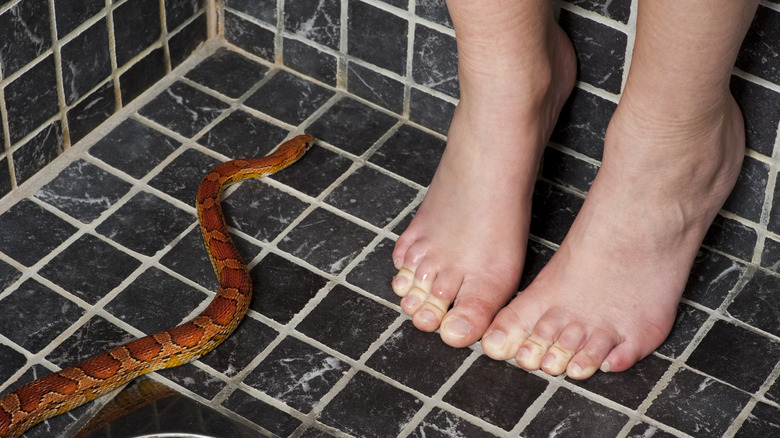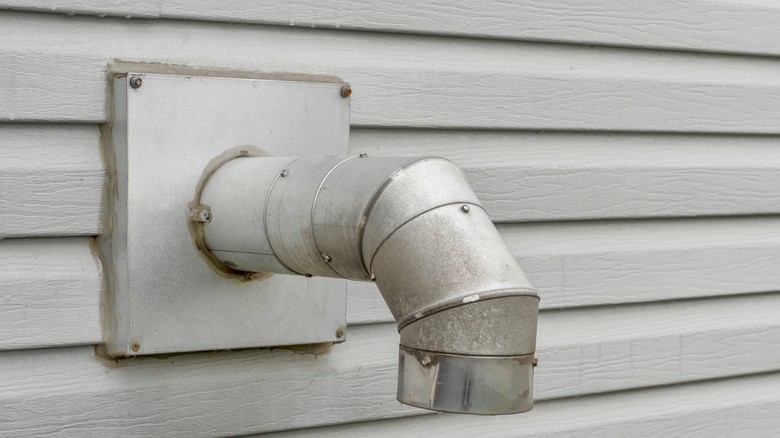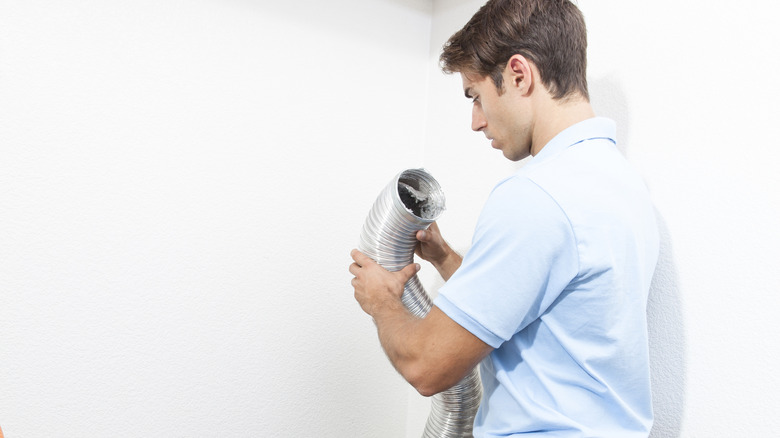The Sneaky Spot Snakes Can Use To Slither Into Your Home (And How To Prevent It)
Picture this: You're in the kitchen wiping your countertop with a soft, dry cloth only to spot Mr. Slithers chilling somewhere in the corner, watching your every move. Although you may enjoy cozying up to snakes in zoos, even touching them, finding a snake secretly living in your home is a different story. Even if it slithers away — as they often do when found out — you'll always fear they'll re-emerge. You may want to hack it with a shovel if you can summon enough courage. However, trying to kill a snake is bad advice: You'll be contending with an increased risk of a snakebite. Moreover, there may be no need as most snakes in home environments are harmless. So, just stay calm and gently herd it outside — or cover it with a pail, then call a professional.
For a long-term solution, ensure you're not harboring the little creatures snakes eat, including mice. Alternatively, consider using a natural snake repellent that could be sitting in your kitchen. Above all, fix all the tiny spaces snakes use to slither into your property. No one thinks about it, but a dryer vent is one sneaky spot these scaly creatures often use to find their way into your home. Discover below why snakes love dryer vents and how to prevent them from using this cozy pathway.
Why snakes love dryer vents
Snakes love dryer vents because they are warm, especially when running. They find warm environments comfortable mainly because they are cold-blooded. Of course, cold-blooded doesn't mean those red pigments have near-zero temperatures. Instead, cold-blooded animals (also called ectotherms) have little capacity to regulate their internal body temperature; hence, they always seek spots with temperature levels that meet their survival needs. Besides being warm, dryer vents are sheltered, denoting some level of security. They may strike you as fearless, but snakes don't like exposure. That's why they are often found under rocks, in overgrown grass, and deep inside holes.
Moreover, because dryer vents are warm, they can attract mice or other rodents — and, as you know, snakes don't enjoy starving. They'll want to be close to their food sources, even if it involves sliding inside your dryer vent. It doesn't matter if your dryer vent is not on the ground floor. Dryer vents, especially on the first floor or higher, often attract birds that snakes might want to eat, particularly the European Starling. You can't fault them: The vents look like the sheltered crannies they enjoy nesting in. So, how do you deal with this?
How to remove snakes from your dryer vent and prevent them from entering
Rather than attempting DIY methods of removing snakes from your dryer vent, the safest thing to do is to call a local pest control company. Granted, some pest control companies don't remove snakes. However, even if they don't, there's a high chance they know an entity that does, hence, they will point you in the right direction. Letting experts do the job will ensure you're safe and that snakes are not unnecessarily harmed. Moreover, you don't want to get yourself into problems with authorities, especially because in certain regions, some snake species are legally protected. Plus, of course, experts can figure out what lured the snake and what to do so they don't come back.
Will the snakes come back in, especially if you do nothing to prevent them? Quite likely. Snakes tend to return to specific locations. So, nothing keeps them from coming back. That's why you will want to install a vent cover fitted with a pest-proof mesh. To prevent both snakes and tiny rodents from getting inside your dryer vent, aim for a mesh with openings that are no more than 0.025 inches. Another option is to contact a specialist to help secure your dryer vent. Also, remember to regularly inspect your dryer vent, keeping it free from debris that attracts rodents. That said, there's a type of fencing that might just be the answer to your snake problem.


